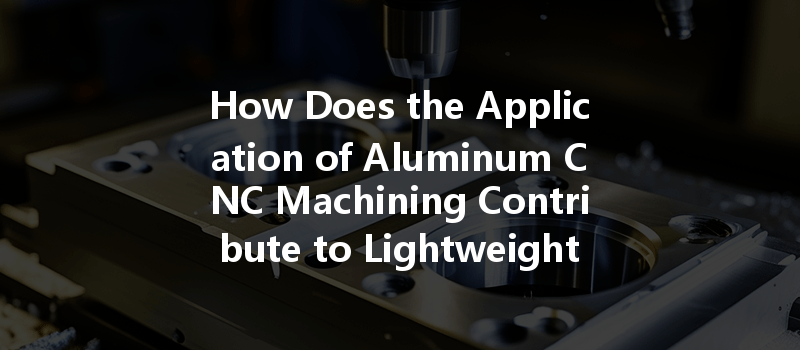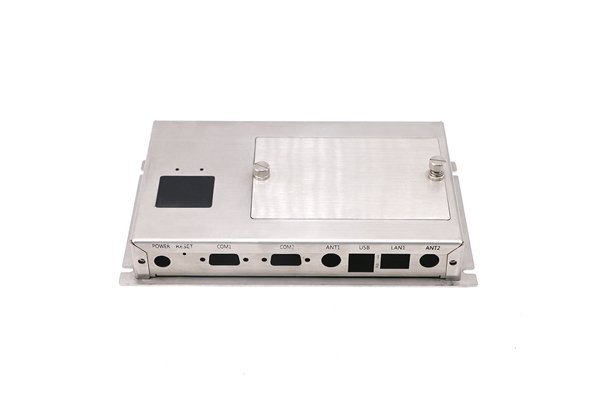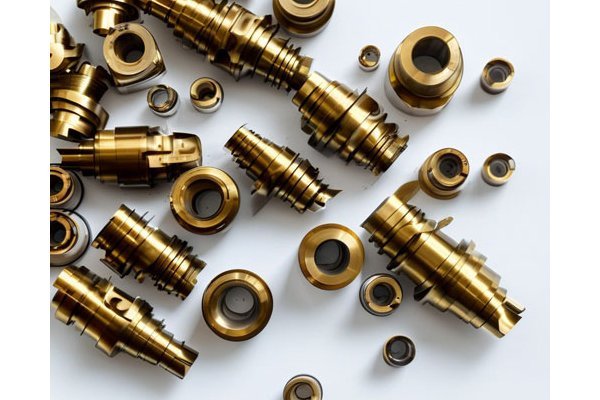Did you know that reducing a car’s weight by just 10% can improve its fuel efficiency by approximately 6-8%? This statistic sheds light on why automotive manufacturers are increasingly turning to advanced materials like aluminum, especially in the pursuit of lightweight designs. As the industry strives to meet stringent emissions standards and consumer demand for fuel-efficient vehicles, the application of aluminum CNC machining has become a game-changer in automotive manufacturing.
In this blog, we will delve in-depth into how aluminum CNC machining enhances lightweight automobile design. We’ll explore the intricacies of aluminum machining, its benefits, challenges, and best practices that will empower automotive manufacturers and engineers. This exhaustive guide aims to be an invaluable resource for those looking to optimize their manufacturing processes while reducing weight without compromising safety or performance.
1.1 What is CNC Machining?
Computer Numerical Control (CNC) machining is a subtractive manufacturing process where pre-programmed computer software controls the movement of factory tools and machinery. In the context of aluminum machining, this automated precision allows for the production of intricate parts that are both lightweight and strong.
1.2 The Properties of Aluminum
Aluminum is prized in the automotive industry for several key properties:
2.1 Weight Reduction
As mentioned earlier, a lighter vehicle results in improved fuel efficiency and reduced emissions. Aluminum CNC machining makes it possible to produce lightweight yet durable components, such as engine blocks, transmission cases, and structural supports.
2.2 Design Flexibility
CNC machining allows for considerable design flexibility. With advanced software, manufacturers can create and modify complex geometries that were previously challenging or impossible to achieve using traditional manufacturing methods.
2.3 Cost-Effectiveness
While the initial cost of aluminum may be higher than that of steel, the long-term savings from improved fuel efficiency and potential tax benefits from lower emissions make aluminum CNC machining a financially sound choice.
2.4 Enhanced Performance
Aluminum parts not only reduce the vehicle’s weight but also improve acceleration and handling due to their lower mass. A vehicle that accelerates faster and handles better leads to a more enjoyable driving experience.
2.5 Sustainability
Utilizing aluminum in automotive design aligns with modern consumer preferences for sustainability. Aluminum is highly recyclable; over 75% of the aluminum ever produced is still in use today. CNC operations can optimize material usage, minimizing waste and promoting an environmentally friendly approach to manufacturing.
3.1 Structural Components
CNC machining allows for the creation of lightweight frames and supporting structures that replace traditional steel components. Parts such as chassis, subframes, and body panels can be manufactured to precise specifications, ensuring strength and safety while reducing weight.
3.2 Engine Components
Aluminum is extensively employed in engine design. CNC machining enables the production of intricate engine components such as cylinder heads, oil pans, and pistons that help reduce overall vehicle weight without sacrificing performance.
3.3 Transmission Parts
The transmission system can benefit from the lightweight principles of aluminum CNC machining. Components like housing, cases, and gears can be efficiently machined, leading to lower overall vehicle weight and improved power-to-weight ratios.
3.4 Wheels and Rims
Lightweight aluminum wheels not only improve aesthetics but also crucially impact performance. CNC machined wheels are durable and can be designed with aerodynamic qualities that further enhance fuel efficiency.
3.5 Heat Exchangers
Aluminum’s heat-dissipating properties make it ideal for manufacturing radiators and intercoolers. CNC machining can facilitate the creation of complex cooling channels required in performance vehicles, contributing to optimal engine performance.
4.1 Material Selection
Choosing the right aluminum alloy is essential. Alloys such as 6061 and 7075 are widely used due to their excellent machinability and strength. Depending on the application, factors like corrosion resistance and thermal conductivity will also play a role in material selection.
4.2 Design for Manufacturing (DFM)
Incorporating DFM practices can streamline the CNC machining process. Considerations include minimizing sharp corners, providing sufficient clearance, and designing for easy clamping to enhance the manufacturability of parts.
4.3 Tooling and Equipment
Selecting the right CNC machine and tooling is pivotal. High-speed machining technologies are often used, requiring precision tools designed specifically for aluminum to achieve optimal results. Coated tools can mitigate wear and improve machining efficiency.

4.4 Setting Cutting Parameters
Key parameters include cutting speed, feed rate, and depth of cut. For aluminum, a higher cutting speed is beneficial, and the feed rate must ensure chip removal while preventing tool binding.
4.5 Post-Processing
Finishing activities such as anodizing, powder coating, and surface treatments enhance corrosion resistance and improve aesthetics. Understanding the properties of the final parts is crucial for selecting the appropriate post-processing method.
5.1 Tool Wear
Aluminum machining can lead to rapid tool wear due to its softness compared to harder metals. This requires careful choice of tools and cutting parameters to extend tool life and optimize costs.
5.2 Thermal Effects
Aluminum has high thermal conductivity. Consequently, excessive machining speeds can lead to increased heat generation, which impacts the dimensional stability of parts. Coolant selection and strategies for heat dissipation become imperative.
5.3 Complex Geometry
While CNC allows for complex designs, machining intricate features may require specialized tooling and setups. Balancing design freedom with production feasibility is essential.
5.4 Surface Finish
Achieving the desired surface finish is critical, particularly for aesthetic parts. Variations in machining parameters can affect surface quality, demanding evaluations after initial machining efforts.
6.1 Continuous Improvement
Emphasize a culture of continuous improvement, where regular training and updates on latest machining technologies can enhance productivity and efficiency in the workplace.
6.2 Invest in Technology
Advancements in CNC technology, like multi-axis machining, can yield significant benefits. Investing in cutting-edge machinery augments production capabilities and allows for more complex designs.
6.3 Quality Control
Implement rigorous quality control measures to ensure that all machined components meet specified tolerances. Advanced inspection tools can help identify and rectify errors in real-time.
6.4 Collaboration with Suppliers
Building strong partnerships with material suppliers ensures access to high-quality aluminum alloys tailored for machining. This can significantly affect the overall success of machining projects.
6.5 Environmental Considerations
Promoting sustainable practices throughout the machining process, from material sourcing to waste management, aligns with modern industry values while enhancing overall efficiency.
7.1 Advanced Alloys
The development of new aluminum alloys with enhanced properties will further improve the adaptability of aluminum in automotive applications, allowing for lighter, stronger, and more durable components.
7.2 Automation and Robotics
Integrating robotics and automation into CNC machining processes promises increased efficiency and precision. Smart manufacturing systems can optimize operations in real-time.
7.3 Additive Manufacturing
Future advancements in additive manufacturing techniques alongside CNC machining may allow for hybrid processes, enabling complex designs that would have previously been impossible.
7.4 Machine Learning
Integrating machine learning algorithms into CNC operations could predict tool wear and optimize machining parameters dynamically, leading to more efficient and effective production processes.
7.5 Environmental Regulations
As regulatory landscapes evolve, manufacturers may increasingly turn to aluminum machining to meet stringent environmental standards while maintaining high-performance.
In summary, the application of aluminum CNC machining plays a pivotal role in the automotive industry’s transformation toward lightweight vehicle design. From improved fuel efficiency and enhanced performance to sustainable practices, aluminum offers numerous advantages that set the stage for future innovations.
As automotive manufacturers lean into CNC machining processes, understanding best practices, challenges, and emerging trends is vital for staying competitive in an ever-evolving landscape. The need for lightweight automotive solutions will only grow, pointing to the importance of aluminum in addressing these challenges.
Ultimately, the continuous exploration of aluminum CNC machining technologies will shape how we view automotive design and sustainability. With the potential to revolutionize vehicle weight while offering outstanding performance benefits, this topic deserves sustained attention and innovation. Engaging with these evolving practices can lead not just to more efficient manufacturing but also to a greener future in the automotive sector.






